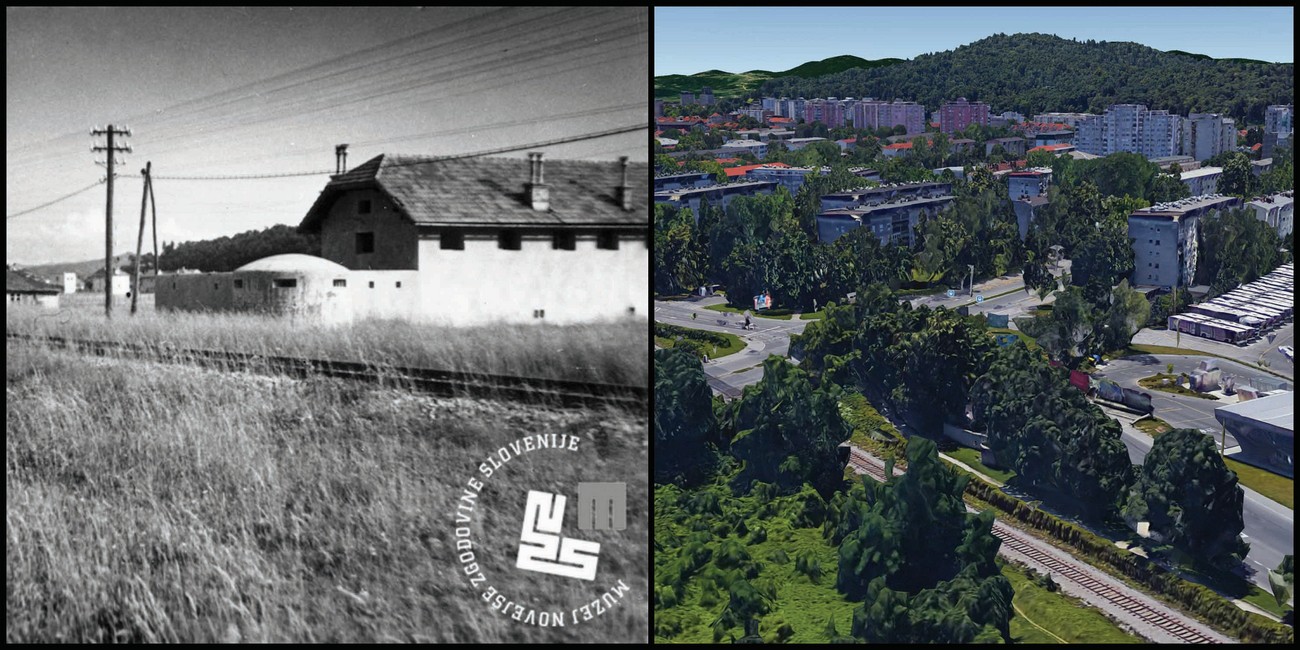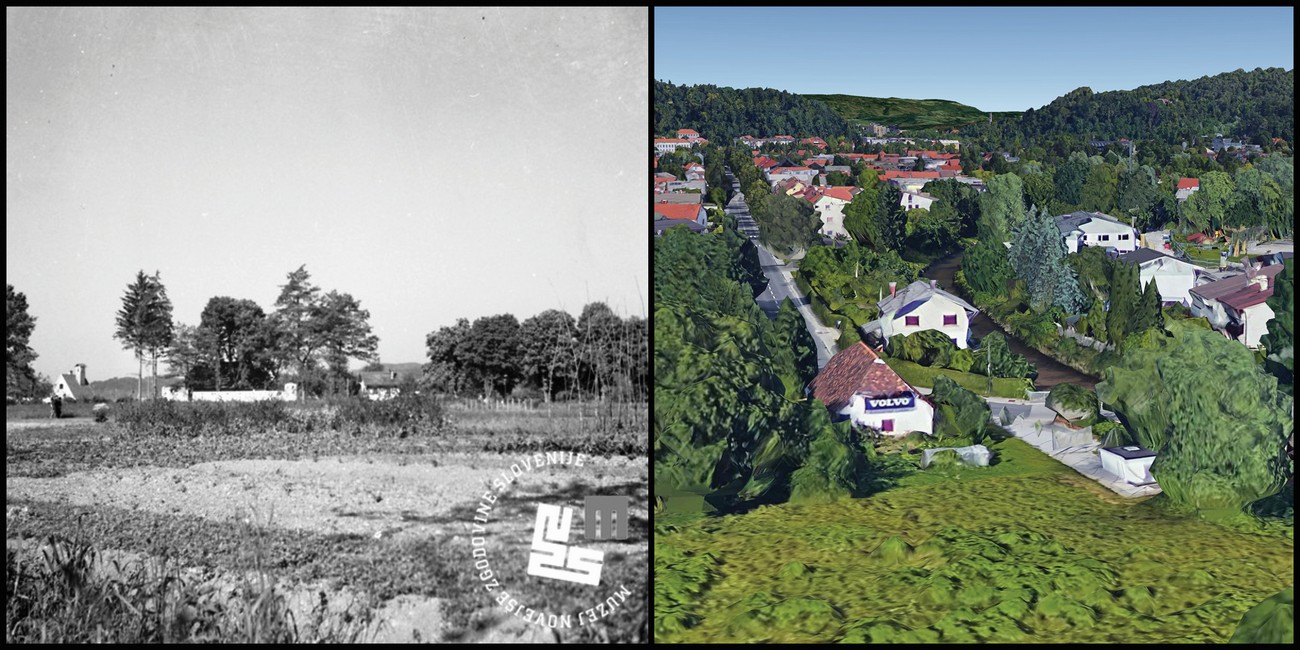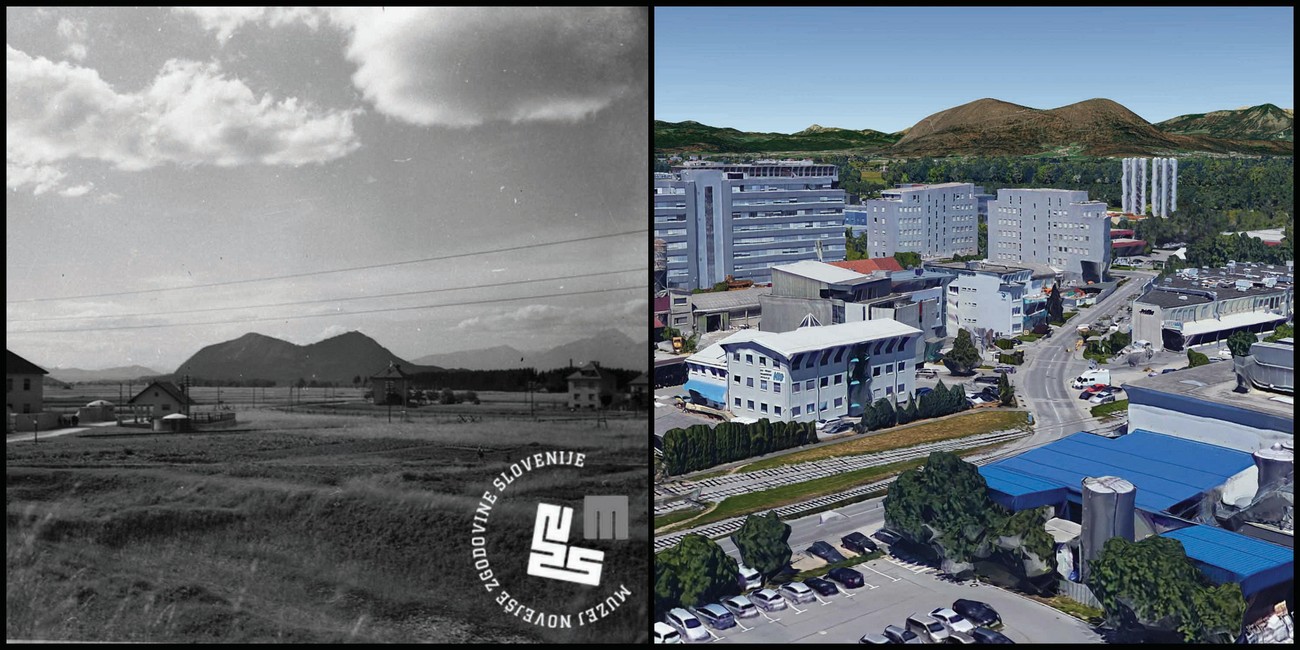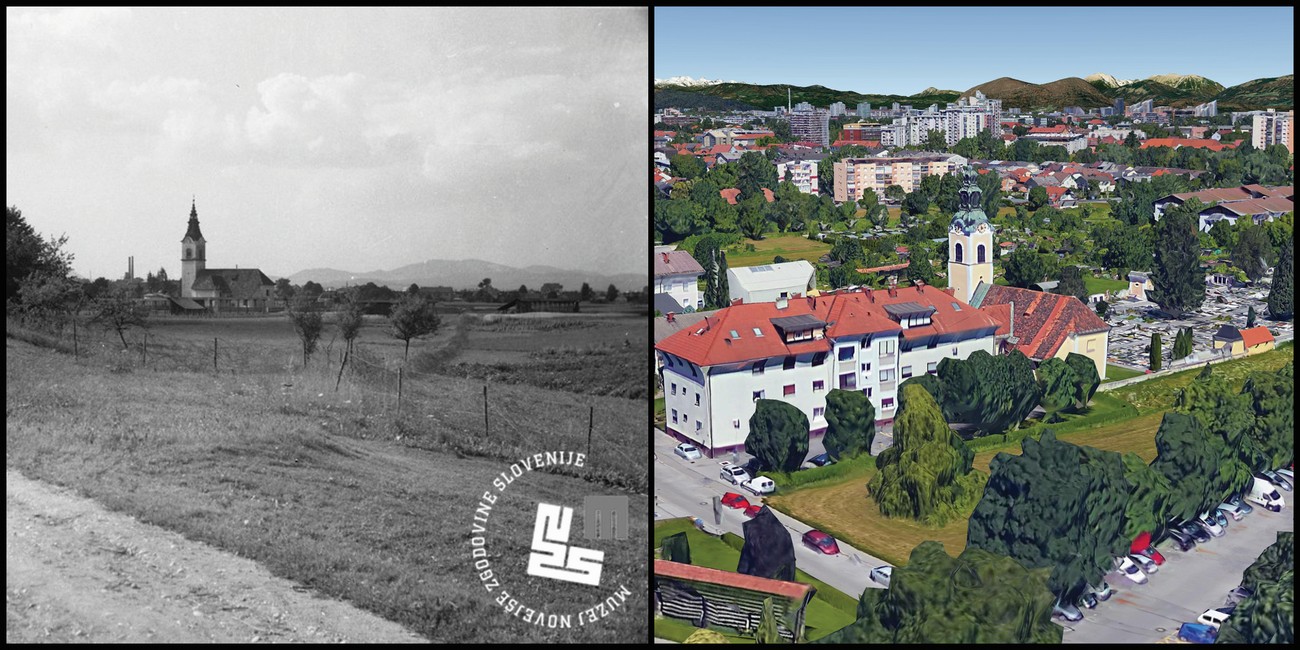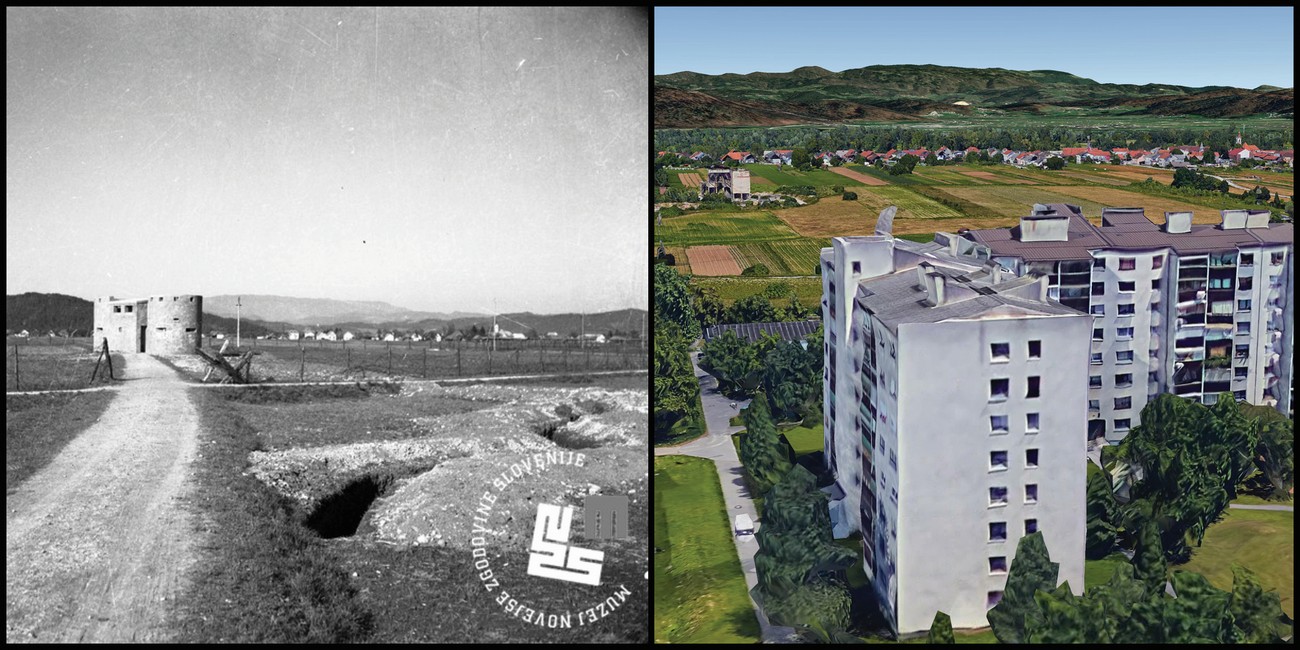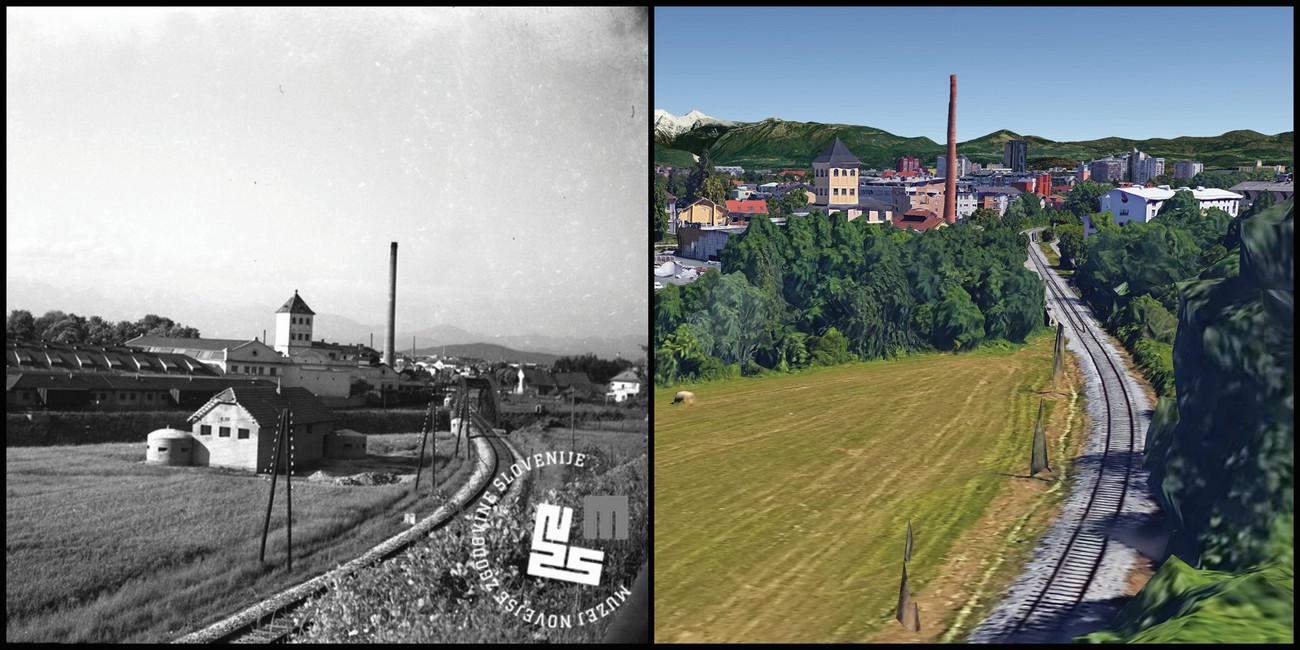Ljubljana and its surroundings have undergone dramatic changed since World War II, mostly on account of post-war urbanization. Population rose from about 120,000 in 1948 to today’s 290,000. The changes in the landscape can easily be seen by comparing World War II photos and modern images. The footage from the war period kept by the Museum of Contemporary History of Slovenia was spatially placed on the basis of historical maps as well as by the relief and anthropogenic features that were identified on the photos. Modern visualization is based on satellite imagery in the Google Earth web globe.
